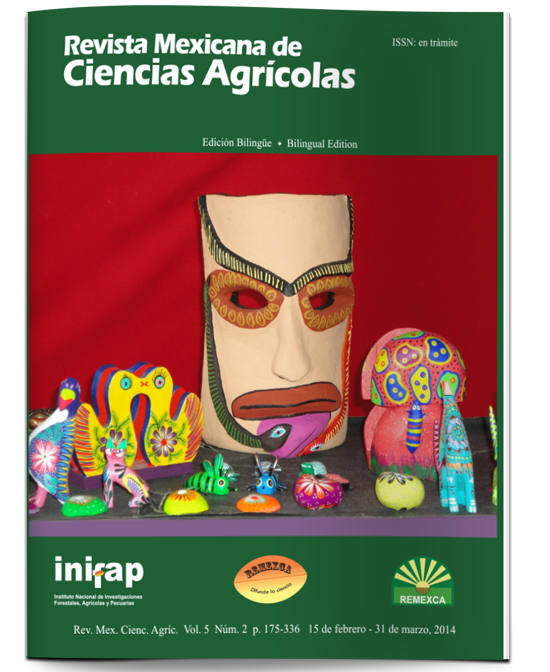Characterization of the runner bean (Phaseolus coccineus L.) of the Trans-Mexican Neovolcanic Belt and Sierra Madre Oriental
DOI:
https://doi.org/10.29312/remexca.v5i2.959Keywords:
Phaseolus spp., genebank, biogeographyAbstract
The runner bean is native to the temperate regions of Mexico. The physiographic provinces of the country, most represented in the collection of native varieties of runner bean germplasm bank are Neovolcanic and the Sierra Madre Oriental. In the Spring-Summer 2009, cycle 231 native varieties were cultivated in the Experimental Field Valle de Mexico in Chapingo, State of Mexico. Two rows were planted on April 30, 2009 on time with seven plants in each row of 4 m. There were days to flowering and days to beginning of maturity. In October-November and harvested seed was determined in eight replicates of 100 seeds weight, in grams. We used a principal component analysis and a cluster with the method "complete". The first three components explained 73% of the variability contained in 231 varieties. The first one was related to the elevation and minimum and maximum average annual temperatures in the collection sites, the second to days to flowering and maturity of the plant, and the third with 100 seed weight, days to flowering, and precipitation of collection sites. The dendrogram associated four groups, according to their geographical origin: the first accessions of Chichonquiaco physiographic sub-province and the remaining three of the Neovolcanic sub-provinces Plains and Sierras de Querétaro and Hidalgo, Puebla Southern and Tarasca Neovolcánica. The runner beans of the Sierra Madre Oriental, Chiconquiaco subprovince, differed from those of Neovolcanic; its shorter growing cycle and small seed. The Neovolcanic runner beans of crop cycles were longer with larger seeds. In turn, the runner beans from the Neovolcanic region were different in their phenological plasticity: some of them when extending their growing season; they shortened the reproductive period, thus reducing the size of its seed. Instead, others, despite coming from very high and very cold places, maintained their long growing season and possibly seed size by the capacity of the root of "sprout" after frost.
Downloads
Downloads
Published
How to Cite
Issue
Section
License
The authors who publish in Revista Mexicana de Ciencias Agrícolas accept the following conditions:
In accordance with copyright laws, Revista Mexicana de Ciencias Agrícolas recognizes and respects the authors’ moral right and ownership of property rights which will be transferred to the journal for dissemination in open access. Invariably, all the authors have to sign a letter of transfer of property rights and of originality of the article to Instituto Nacional de Investigaciones Forestales, Agrícolas y Pecuarias (INIFAP) [National Institute of Forestry, Agricultural and Livestock Research]. The author(s) must pay a fee for the reception of articles before proceeding to editorial review.
All the texts published by Revista Mexicana de Ciencias Agrícolas —with no exception— are distributed under a Creative Commons License Attribution-NonCommercial 4.0 International (CC BY-NC 4.0), which allows third parties to use the publication as long as the work’s authorship and its first publication in this journal are mentioned.
The author(s) can enter into independent and additional contractual agreements for the nonexclusive distribution of the version of the article published in Revista Mexicana de Ciencias Agrícolas (for example include it into an institutional repository or publish it in a book) as long as it is clearly and explicitly indicated that the work was published for the first time in Revista Mexicana de Ciencias Agrícolas.
For all the above, the authors shall send the Letter-transfer of Property Rights for the first publication duly filled in and signed by the author(s). This form must be sent as a PDF file to: revista_atm@yahoo.com.mx; cienciasagricola@inifap.gob.mx; remexca2017@gmail.
This work is licensed under a Creative Commons Attribution-Noncommercial 4.0 International license.



